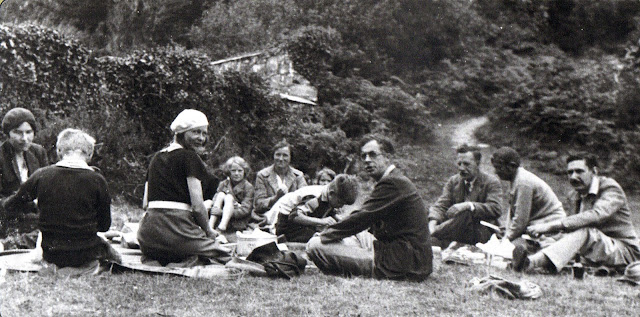 |
| Louis Renouf (from Kearney*) |
The first to develop Lough Ine (or Hyne) in southern Ireland as a marine biological research station was Louis Percy Watt Renouf (1887-1968) while he was Professor of Zoology at University College, Cork between 1922 and 1954. The whole story is told in Terri Kearney’s book*. During the late 1920s and 30s Renouf promoted Lough Ine as a place for visiting research workers, having succeeded in erecting first a packing case and then, in 1928, an old army hut as a laboratory. He attracted some big names in British biology including Nellie Eales (1889-1989) and Julian Huxley, who published the work he did there on regeneration in the polychaete, Sabella, in 1933.
I came across an article in Zoo magazine (soon to be renamed Animal and Zoo Magazine)(Volume 2 (3), August 1937) which also contained a map of Lough Ine. Renouf was a regular contributor to the Zoological Society of London’s magazine (Huxley, as Secretary, was Advisory Editor) and was listed as a patron of the ‘Zoo Club’ run by the magazine and the Society; he was described as ‘President of the Guild of Catholic Biology’ and appears to have been one of that church’s adherents who was trying from the inside to persuade the catholic hierarchy that evolution was something they should not oppose; in modern parlance he was an accommodationist.
Animal and Zoo Magazine, June 1938 (3(1)) contained brief biographies of contributors between June 1937 and June 1938. Here is Renouf’s entry (the editors or printers omitted his initial ‘L’):
With the arrival of the Kitching-Ebling expeditions each summer from the late 1940’s there appear (from the brief summaries of the archived letters between Kitching and Ebling) to have been tensions with Renouf over finances and between Renouf and University College, Cork. It appears that Kitching bought land on the lough for a hut to overcome the problem of paying what he thought were excessive fees to use the facilities provided by Renouf. My impression is that Ebling and Renouf remained on fairly friendly terms, with John Ebling writing Renouf’s obituary for the Royal Society of Edinburgh (Renouf had been elected in 1936).
Whatever, the difficulties Renouf’s efforts at Lough Ine were completely overshadowed, scientifically and organisationally from the early 1950s by the Kitching-Ebling show.
There is no doubt though, that it was Renouf, who was told of Lough Ine and its potential on his arrival in Cork in 1922 who worked under difficult conditions—financial, political and geographical—to get Lough Ine up and running as one of the places for marine biology.
Lough Ine was designated as Europe’s first Marine Nature Reserve in 1981.
 |
| Julian Huxley (centre right) at Lough Ine in 1933 (from Kearney*) |
* Kearney T. 2011. Lough Hyne. The Marine Researchers - in Pictures. Skibereen Heritage Centre. Obtainable from here.
Ebling FJG. 1969. Louis Percy Renouf BA, Dip Agric (Cantab), DSc (Nat Univ Ireland). MRIA. Yearbook of the Royal Society of Edinburgh 1967-68, 54-55.



No comments:
Post a Comment